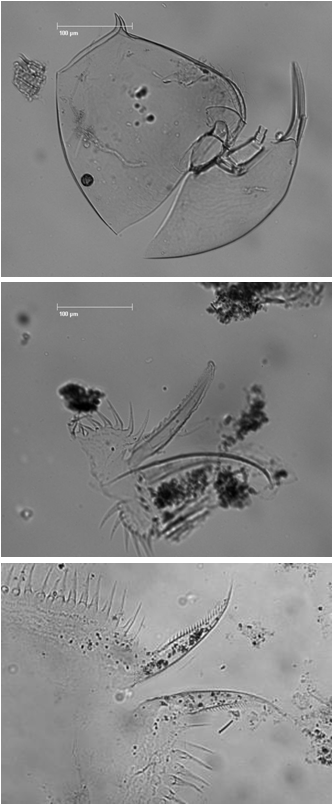- - - Paleolimnology - - -
Paleolimnology (Greek: paleon=old, limne=lake, logos=study) is the study of the biological, chemical and physical indicators preserved in lake sediments to reconstruct past environmental conditions. Lakes gradually fill in over time, therefore accumulated lake sediments can provide an archive of material dating back 100s or 1000s of years.
Analysis of a sediment core that has been sectioned into sequential intervals can provide a chronological history of the conditions within and around that lake. Paleolimnological indicators like diatoms, cladoceran subfossils, chemical pigments and radioisotopes can be used to reconstruct many ecological variables. For example, although lake acidification was first recognized as an environmental concern in the mid 20th century, and the longest direct measurements of pH extend for ~100 years in a few select lakes, diatom-inferred pH models can provide a long-term record of pH for almost any lake.
Although paleolimnology is a relatively young discipline, it has provided major advancements in our understanding of aquatic systems. The indirect approach of paleolimnological analyses have yielded valuable data on the long-term impacts of many environmental stressors (such as acid deposition, cultural eutrophication and climate change) while also aiding the evaluation of mitigation efforts. The continued identification of new indicator types that increase the information that can be extracted from lake sediments will ensure that paleolimnology remains an invaluable tool for informing policy and resource management decision makers.

- - - Research Interests - - -
My research is focused on improving the understanding of anthropogenic influences upon aquatic ecosystems. Specifically, in the use of the algal and invertebrate remains preserved in lake sediments to track long-term environmental change and develop the biomonitoring tools required to assess the impact of multiple environmental stressors upon boreal lakes.
Paleolimnological approaches are my primary research tool, as the questions I'm interested in typically pre-date the onset of direct monitoring. These include questions like: How have the aquatic communities of lakes changed since the onset of acid deposition? How have industrial development projects influenced the ecology of lakes in their immediate vicinity? What are the ecological impacts of regional climate warming on lakes of the Canadian Shield and what trajectory will these changes follow in future decades?

- - - Projects - - -
While a paleolimnological researcher at PEARL I have had the opportunity to work on a variety of limnological issues related to the recovery of aquatic communities from industrial impacts and their responses to regional climate warming. This work has covered many geographic regions of Ontario and elsewhere (see map) over the course of several distinct research projects.
- The ecological impacts of calcium decline on softwater lakes of the Canadian Shield
- Recovery of lake ecosystems following decades of intense industrial activities
- Identifying ecological changes since pre-industrial times in lakes in the vicinity of the Ontario 'Ring of Fire'
- Examining how Ontario lake trout habitat (specifically deep water oxygen conditions) is changing in response to regional climate warming